Exploring Newcastle upon Tyne: The Definitive guide for Travellers
Newcastle upon Tyne is discussed in this article for senior couples and mature solo travellers on an educational small group tour. Learn about this English city and the Romans, Vikings, Middle ages and Victoria and the Industrial revolution.
24 Sep 21 · 8 mins read

Exploring Newcastle
Newcastle (or Newcastle upon Tyne) in northeast England is rich in architectural wonders and steeped in history. It was an important settlement on the River Tyne during Roman times, a thriving commercial hub in the Middle Ages, and an important commercial and shipping centre during the Industrial Revolution. In this article, we will trace the development of the city through the centuries and explore its iconic monuments.
The Royal Geographical Society with the Institute of British Geographers created a booklet to guide visitors who may want to go on a self-guided walking tour around Newcastle city. This was used as a reference in writing this article, while other sources were linked throughout. Odyssey Traveller also has a 22-day small group tour to Liverpool, Newcastle, and Glasgow.
Newcastle under the Romans
Newcastle dates from the Roman period of the British Isles in the 1st century, when the Romans built a bridge to cross the River Tyne. The bridge was named Pons Aelius, after the family name of Roman Emperor Hadrian (born in 76 AD as Publius Aelius Hadrianus), who also commissioned the 117-kilometre-long wall that spanned northern Britain and served as an important fortification of the Roman Empire.
The original Roman bridge fell into disrepair and was replaced by a stone bridge in 1270, and again by another bridge after the replacement was destroyed by floods during the 18th century. By the 19th century, the Industrial Revolution was well under way, and more and more trading ships journeyed down the River Tyne. In 1866, the Swing Bridge was constructed, called as such as it could rotate 90 degrees to allow ships to pass through. This means the present-day Swing Bridge spans the same area that the Romans used to cross the Tyne for the first time.
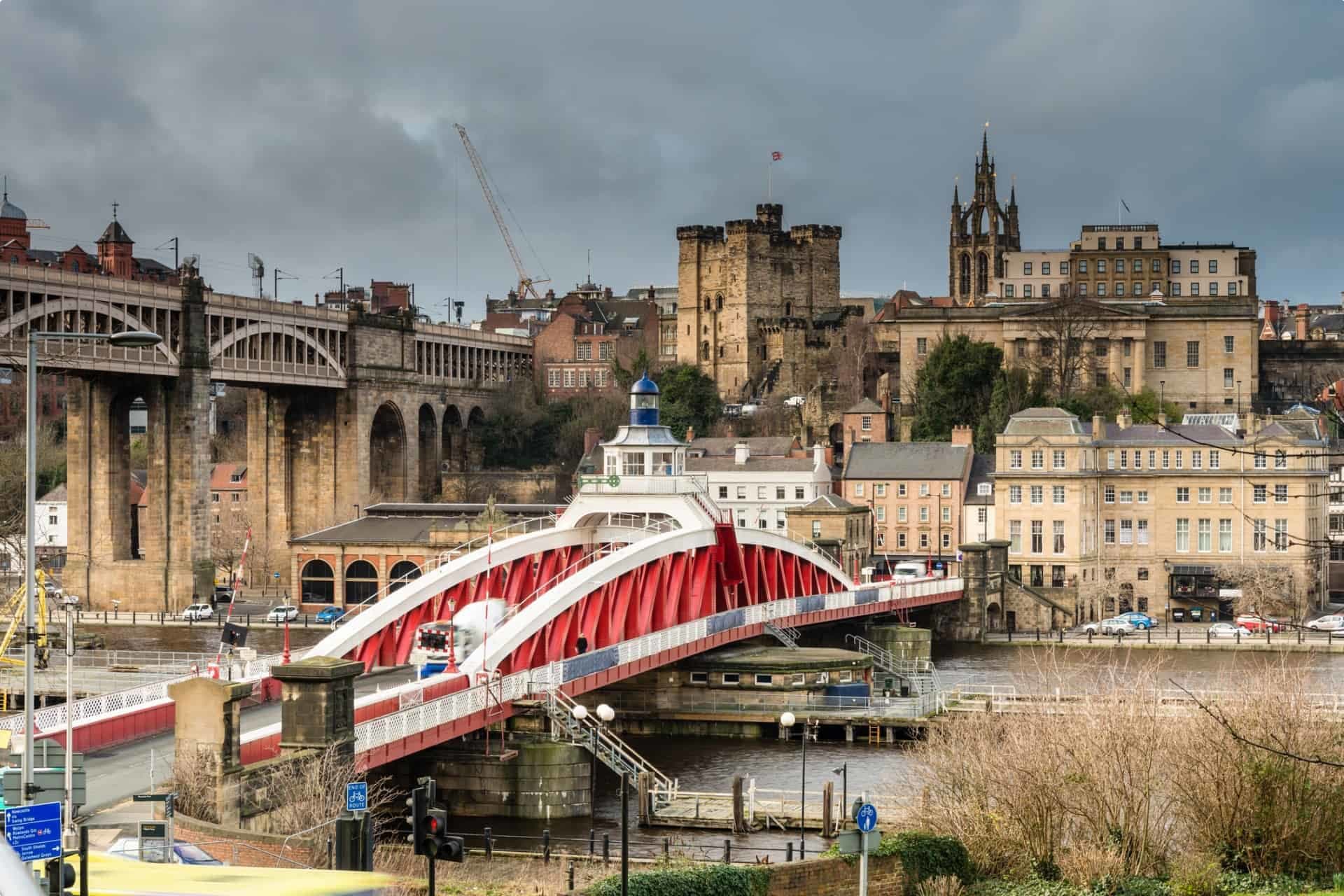
Hadrian’s Wall marched across northern Britain from the Roman fort of Maia (now the small village of Bowness-on-Solway) in the west, to the fort of Segedunum in the east. Segedunum (“strong fort”) is located eight kilometres (5 miles) east of Newcastle. The easternmost wall’s end of Hadrian’s Wall is located in a modern-day Newcastle suburb, appropriately named Wallsend.
Segedunum is currently the most excavated section of Hadrian’s Wall. Visitors can enjoy a bird’s-eye view of the surviving foundations of buildings and a part of the great Roman fortification from the 35-metre viewing tower. Beneath the tower is an interactive museum and a full-scale reconstruction of a Roman bathhouse, offering a glimpse of life during Roman times.
The Norman Invasion
The Romans also built a fort by the river to protect the new settlement, near the site of the present-day Tyne Bridge. In 1066, William (“the Conqueror”), Duke of Normandy, launched a siege that led to the invasion of England. William descended from Rollo, the Viking chief who captured the French territories that would later become Normandy in the 10th century.
William’s conquest was the conclusion of a complicated, years-long fight for the throne after the death of Edward the Confessor, the last king from the Anglo-Saxon royal line. The childless Edward designated William, his first cousin once removed, as his successor in 1051, but ended up dangling the same promise in front of other parties as a strategic move throughout his reign. On his deathbed, Edward named Harold, Earl of Wessex, as his successor. Harold himself swore an oath–in front of William to boot–to defend William’s right to the throne, but this did not stop him from accepting the crown.
William defeated and killed Harold in the Battle of Hastings, and he was crowned king in 1066. In 1080, William’s eldest son, Robert, built a wooden castle on the site of the old Roman fort, from which the town took its name—Novum Castellum, or “new castle”.

Newcastle in the Middle Ages
The town of Newcastle became an important settlement in the 12th century, due to its position as a defence point on the east coast route from Scotland. Robert’s wooden castle was replaced by a stone keep, built between 1172 and 1177 by Henry II, to guard the bridge across the Tyne. A gate, called the Black Gate (said to be named after a merchant in the 17th century to whom the gatehouse was leased), was added to the castle between 1247 and 1250, consisting of two towers connected by a passage.
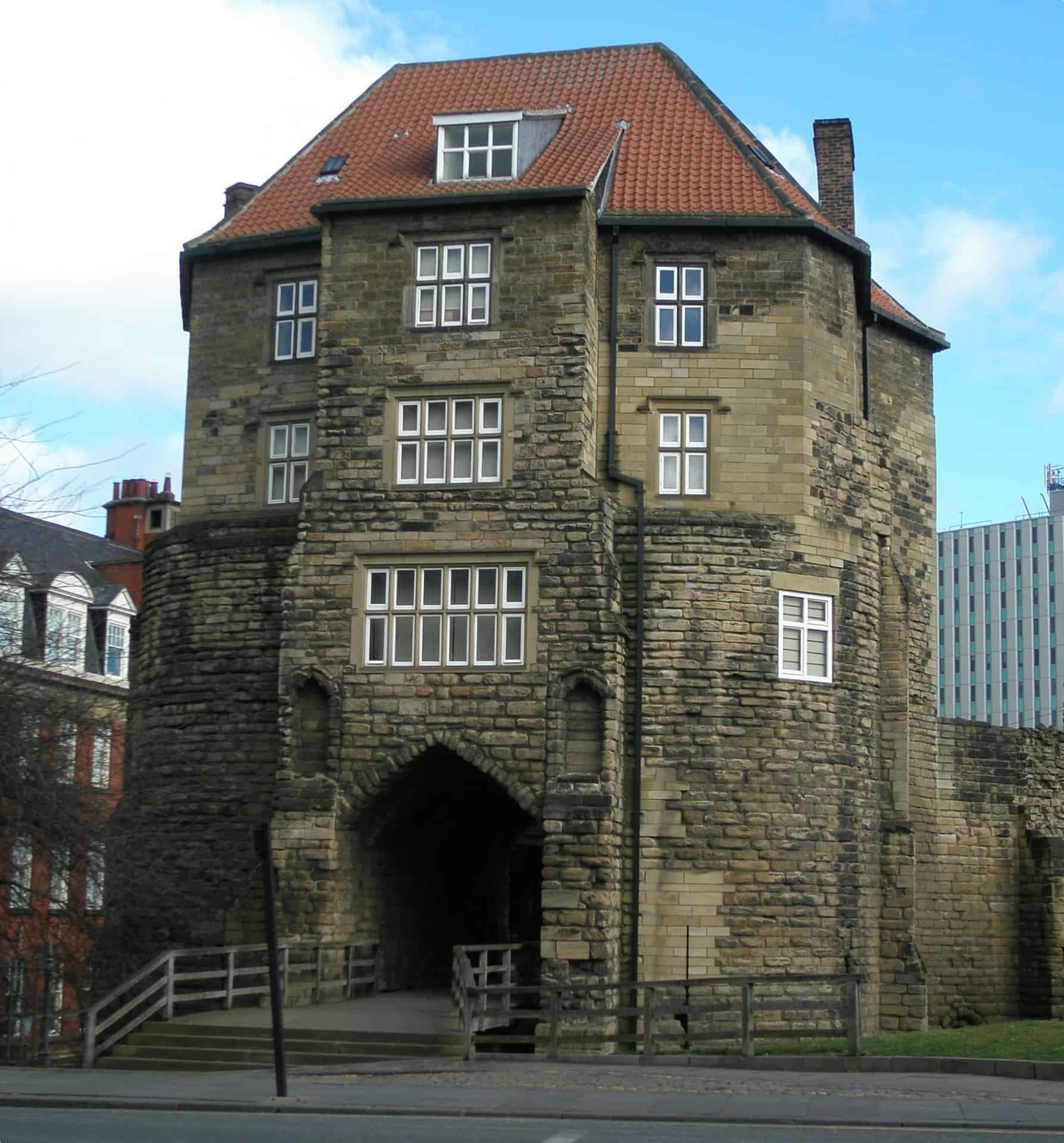
The Castle Keep is in the centre of Newcastle to the east of Newcastle railway station, and can be viewed from the station’s island platform. Between the Castle Keep and the Black Gate is a 23-metre gap, filled by the railway viaduct. Visitors can go inside both buildings to view exhibitions about Newcastle’s history, and view the city from the keep’s battlements.
The stone fortress communicated protection, and attracted religious and commercial bodies, and subsequently contributed to the town’s rapid expansion. Before the Industrial Revolution, wool was England’s major source of wealth. In 1353, Newcastle became an important wool-manufacturing town and gave birth to a thriving cloth industry in the late Middle Ages. In 1400, Henry IV created Newcastle upon Tyne as a county with its own sheriff.
Growth of Industry
The Industrial Revolution in Britain produced many and far-reaching changes, including the use of new energy sources, chief of which was coal. Coal was the fuel that powered industries like steel and heavy engineering. The area below what was the Scottish and Newcastle Breweries plant near modern-day St James’s Park football stadium was mined extensively for coal. In the 16th century, coal mined in Newcastle (and shipped to London) surpassed wool as the town’s chief export. London’s dependence on Newcastle coal gave rise to the expression “carrying coals to Newcastle“, which means doing something unnecessary or superfluous.
Coal mining was extremely dangerous work, and miners didn’t have security as coal owners owned miners’ housing and evicted those who protested the unsafe working conditions. In the 1830s the miners began forming unions to fight for better pay and safety.
The North of England Institute of Mining and Mechanical Engineers (NEIMME), more commonly known as The Mining Institute, was established in the 1850s originally to discuss mining safety. It now possesses one of the largest collections of mining information in the world and can give considerable insight to visitors into the coal mining industry that once thrived in Newcastle.
Banking houses opened in Newcastle by the 18th century, and its rich industries led to its designation as a county borough in 1888.
Let’s look at the structures built during this period. In fact, for this first monument, we’ll have to look up: the 41-metre-high Grey’s Monument was erected in 1838 in the centre of Newcastle to commemorate Charles Grey, 2nd Earl Grey, who served as Prime Minister from 1830 to 1834.
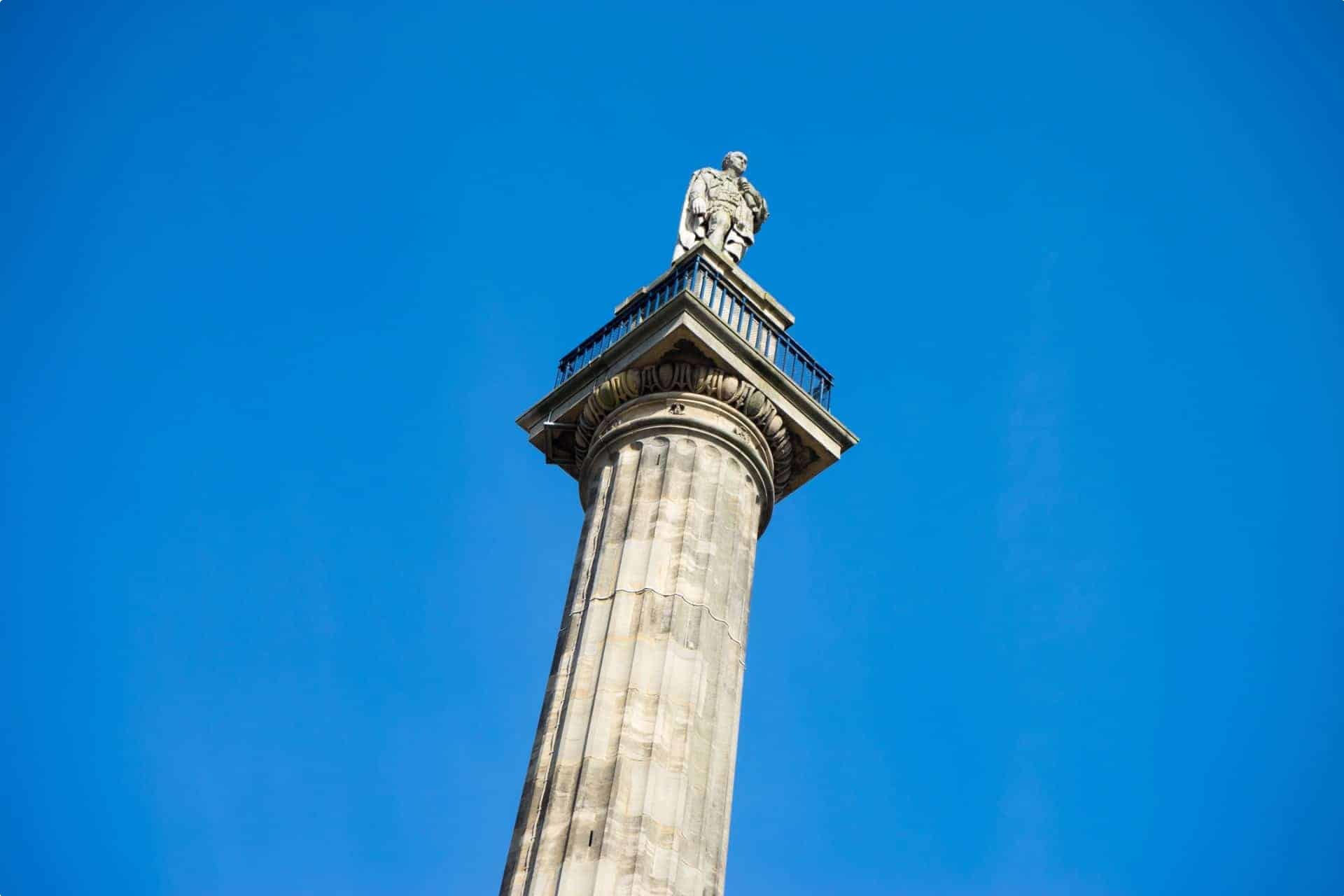
Grey, who started his political career at the age of 22, led the passing of the Great Reform Act of 1832, which introduced many changes to the electoral system: it granted seats in the House of Commons to large cities that developed during the Industrial Revolution and abolished the seats of small boroughs that were just dominated by a wealthy patron. It also allowed more people to vote. The abolition of slavery throughout the British Empire in 1833 also occurred during his term.
Earl Grey was also said to have lent his name to the famous blend of tea, Earl Grey tea, that uses oil from bergamot oranges.
Grey’s Monument is located on Grey Street, which was built by architect Richard Grainger. Grey Street is part of Grainger Town, Newcastle’s historic heart. Many of Newcastle’s finest buildings and streets–Grainger Market, Theatre Royal, Grey Street, Grainger Street, and Clayton Street–can be found here, built between 1824 and 1841. The Grainger Market is home to the last surviving Marks & Spencer Penny Bazaar.

In 1825, the Literary and Philosophical Society of Newcastle upon Tyne, popularly known as The Lit & Phil, was established, and it became the largest independent library outside of London. The Society was founded in 1793 as a “conversation club” and the building was opened as a public library and as a space for the Society members. The Society still exists more than two centuries later, with 2,000 members and a library collection of more than 170,000 volumes. Everyone is welcome to browse the library, or to join one of the free guided tours on the first Saturday and third Wednesday of the month.
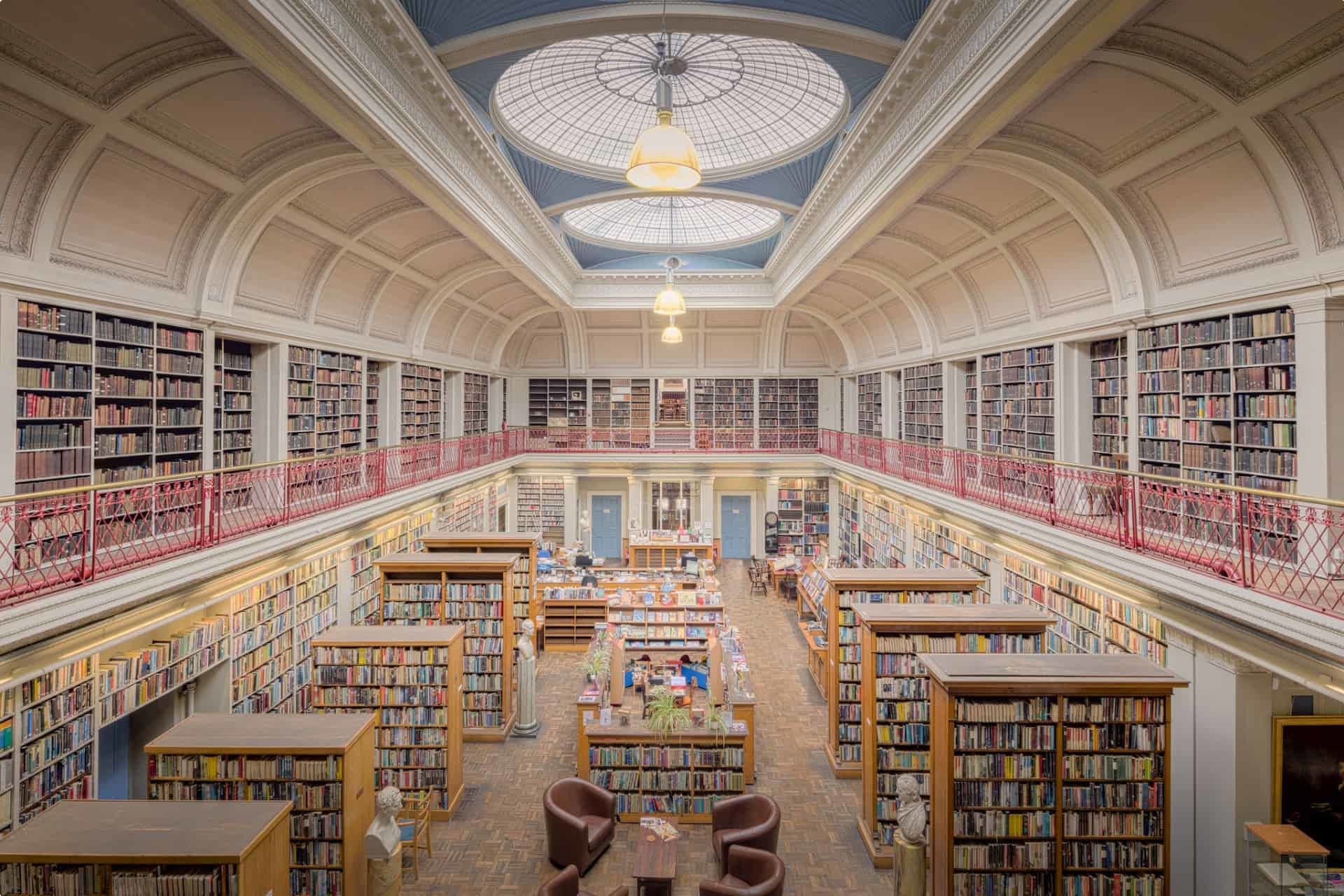
The subterranean Victoria Tunnel which runs under Newcastle’s streets was built between 1839 and 1842 as a wagonway to transport coal to the river for export. Running for four kilometres, the tunnel was used as an air-raid shelter during World War II. There are volunteer-led tours that can take visitors through a 700-metre-long section of the Victoria Tunnel.
Newcastle Central railway station was opened in 1850, inaugurated in a public ceremony by Queen Victoria herself. The Central Station was an important transport hub for residents of Newcastle, and was also crucial in transporting coal to London. The station was designed in the neo-classical style by architect John Dobson.
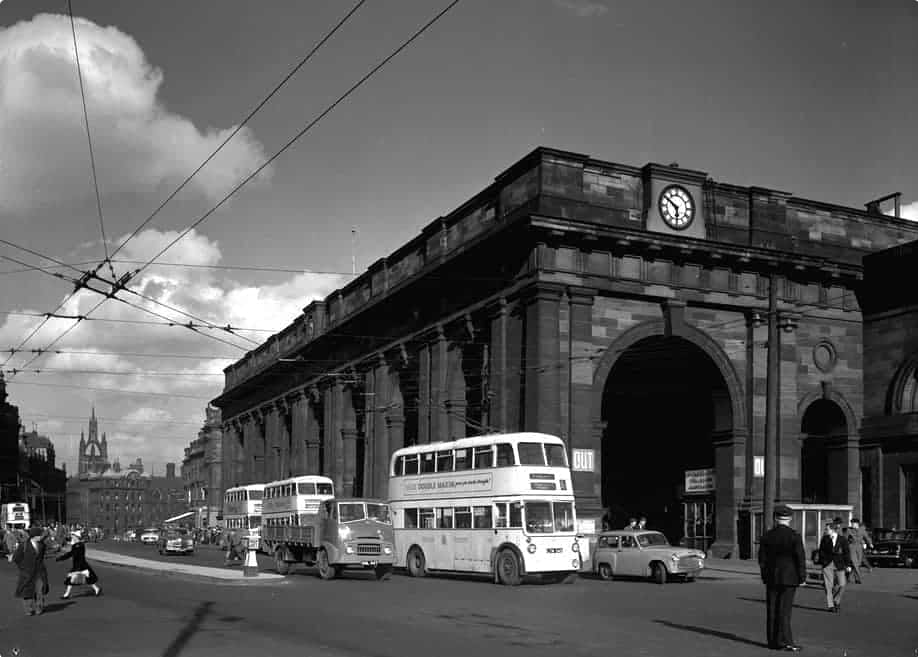
In 1850, the High Level Bridge was opened, and until 1906 it was part of the East Coast Main Line railway, travelling from London to Edinburgh with a stop at Newcastle. Now it provides a route for trains heading towards Sunderland and Middlesbrough. In 1866, it was joined by the Swing Bridge, which we’ve mentioned earlier.

St. Nicholas Cathedral is one of the oldest buildings in Newcastle, originally built as a parish church in 1091 but destroyed by fire in the 13th century. It was later rebuilt and raised to cathedral status when Queen Victoria created the diocese of Newcastle in 1882. (The British monarch as Supreme Governor is the head of the Church of England.) St. Nicholas Cathedral is notable for its lantern spire, constructed in 1448. For centuries, the spire served as a main navigation point for ships travelling down the River Tyne.

St. James’ Park was originally grazing land and nothing more than a bare pitch when it was used for football games in 1880. Newcastle United began playing at St. James’ Park in 1892, and stands and terraces were added over the years, allowing up to 60,000 spectators to watch the games.
20th Century Newcastle
The iconic Tyne Bridge spans the River Tyne and links Newcastle with the town of Gateshead. When it was officially opened in 1928 by George V, it was the largest single-span bridge in the world. Its design is based on the Hell Gate Bridge in New York, and bears similarities to the Sydney Harbour Bridge in Australia.
The world wars boosted the need for coal, but the 1950s saw the closures of a hundred North East coal mines. The industry was put under government control in 1947, but even nationalisation did not put an end to the closures. Coal mining ceased in Newcastle by the late 20th century.
The decline in the coal industry led to a decline in trade, and shipping company offices closed. The Newcastle riverside, vibrant since the Middle Ages, begun to die and look derelict. In the 1990s, the local government redeveloped Newcastle and built new commercial and residential facilities to return life to the quayside.
The Gateshead Millennium Bridge, an important addition to the redevelopment of Newcastle, was officially opened to greet the new millennium in 2001.

By the bridge was an old flour mill called the Baltic (as Britain’s largest wheat suppliers were Baltic countries) which closed in 1981 but reopened in 2002 as a modern art gallery called the BALTIC Centre for Contemporary Art. The BALTIC has no permanent exhibitions, so visitors are treated to a rotating show showcasing the best of the best in the contemporary art scene.
Another commercial building turned art museum is the Biscuit Factory, also founded in 2002, a Victorian biscuit manufacturing warehouse that now houses artist studios and gallery exhibitions.
The former Co-operative Wholesale Society building is now the Discovery Museum, which tells the story of the city’s history from its Roman era. One of its exhibition highlights is the Turbinia, the world’s first steam turbine powered ship, which in 1897 was the fastest ship in the world.
If you want to experience the amazing landscapes and scenery of Newcastle, join Odyssey Traveller’s 22-day tour to Liverpool, Newcastle, and Glasgow. All of the tours organised by Odyssey Traveller travel in small groups and are especially designed for the senior traveller, whether travelling alone or with a companion. Click through to find out more.
Originally published April 3, 2019.
Updated on October 9, 2019. Refreshed September 24th 2021.
Related Tours
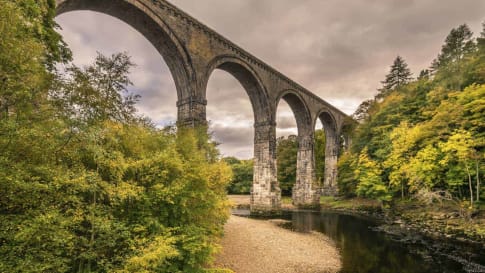
23 days
Oct, Apr, SepCanals and Railways in the Industrial Revolution Tour | Tours for Seniors in Britain
Visiting England, Scotland
A small group tour of Wales, Scotland & England that traces the history of the journey that is the Industrial revolution. Knowledgeable local guides and your tour leader share their history with you on this escorted tour including Glasgow, London, New Lanark & Manchester, Liverpool and the Lake district.
From A$18,750 AUD
View Tour
From A$14,595 AUD
View Tour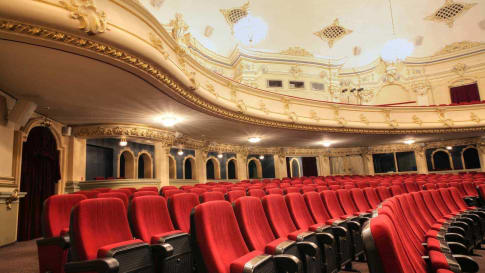
9 days
AugGilbert and Sullivan Festival Small Group tour
Visiting England
A 9 day tour with a tour director and local guide explore the Victorian music of Gilbert and Sullivan. We visit on this journey, Manchester, Harrogate, Oxford & London, attending the Gilbert & Sullivan festival and places of historic interest.
From A$9,350 AUD
View Tour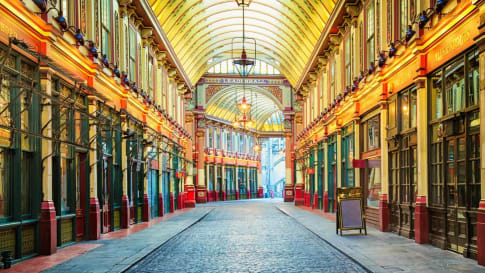
21 days
Sep, JunQueen Victoria's Great Britain: a small group tour
Visiting England, Scotland
A small group tour of England that explores the history of Victorian Britain. This escorted tour spends time knowledgeable local guides with travellers in key destinations in England and Scotland that shaped the British isles in this period including a collection of UNESCO world heritage locations.
From A$16,675 AUD
View Tour22 days
AugRoman Britain
Visiting England
On this small group tour explore with a tour director and local guides the world of Roman Britain. The Romans occupied Britain for some 400 years and left behind a lasting legacy from roads Hadrian's wall to Roman Baths many are UNSECO World heritage listed.
From A$14,545 AUD
View Tour
22 days
Apr, SepSmall group tours Medieval England
Visiting England
A small group tour of England focused on Medieval England and Wales. Spend 21 days on this escorted tour with tour director and local guides travelling from Canterbury to Cambridge, passing through Winchester, Salisbury, Bristol, Hereford and Norwich along the way. Castles, villages, Cathedrals and churches all feature in the Medieval landscapes visited.
From A$15,395 AUD
View Tour
22 days
Apr, AugSeven Ages of Britain, snapshots of Britain through the ages.
Visiting England, Scotland
This guided small group tour starts in Scotland and finishes in England. On Orkney we have a day tour to the UNESCO World heritage site, Skara Brae, before travelling to city of York. Your tour leader continues to share the history from the Neolithic to the Victorian era. The tour concludes in the capital city, London.
From A$16,895 AUD
View Tour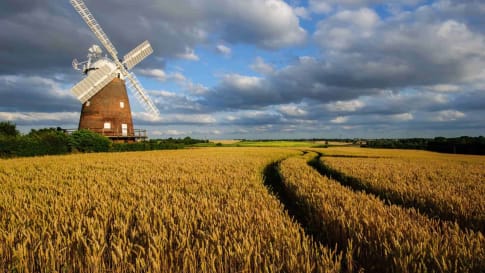
23 days
AprAgrarian and Industrial Britain | Small Group Tour for Mature Travellers
Visiting England, Wales
A small group tour of England that will explore the history of Agrarian and Industrial period. An escorted tour with a tour director and knowledgeable local guides take you on a 22 day trip to key places such as London, Bristol, Oxford & York, where the history was made.
From A$17,275 AUD
View Tour

